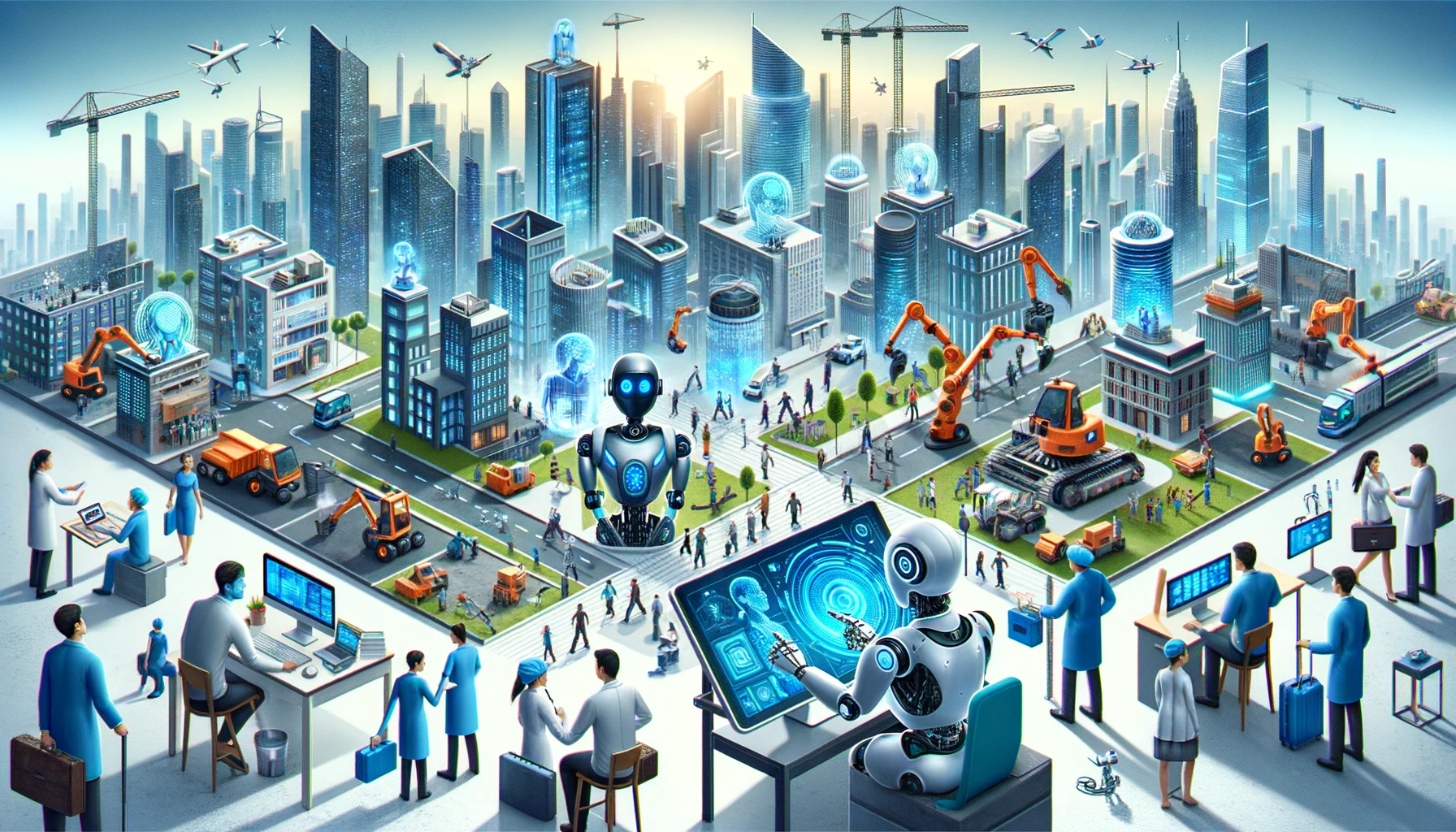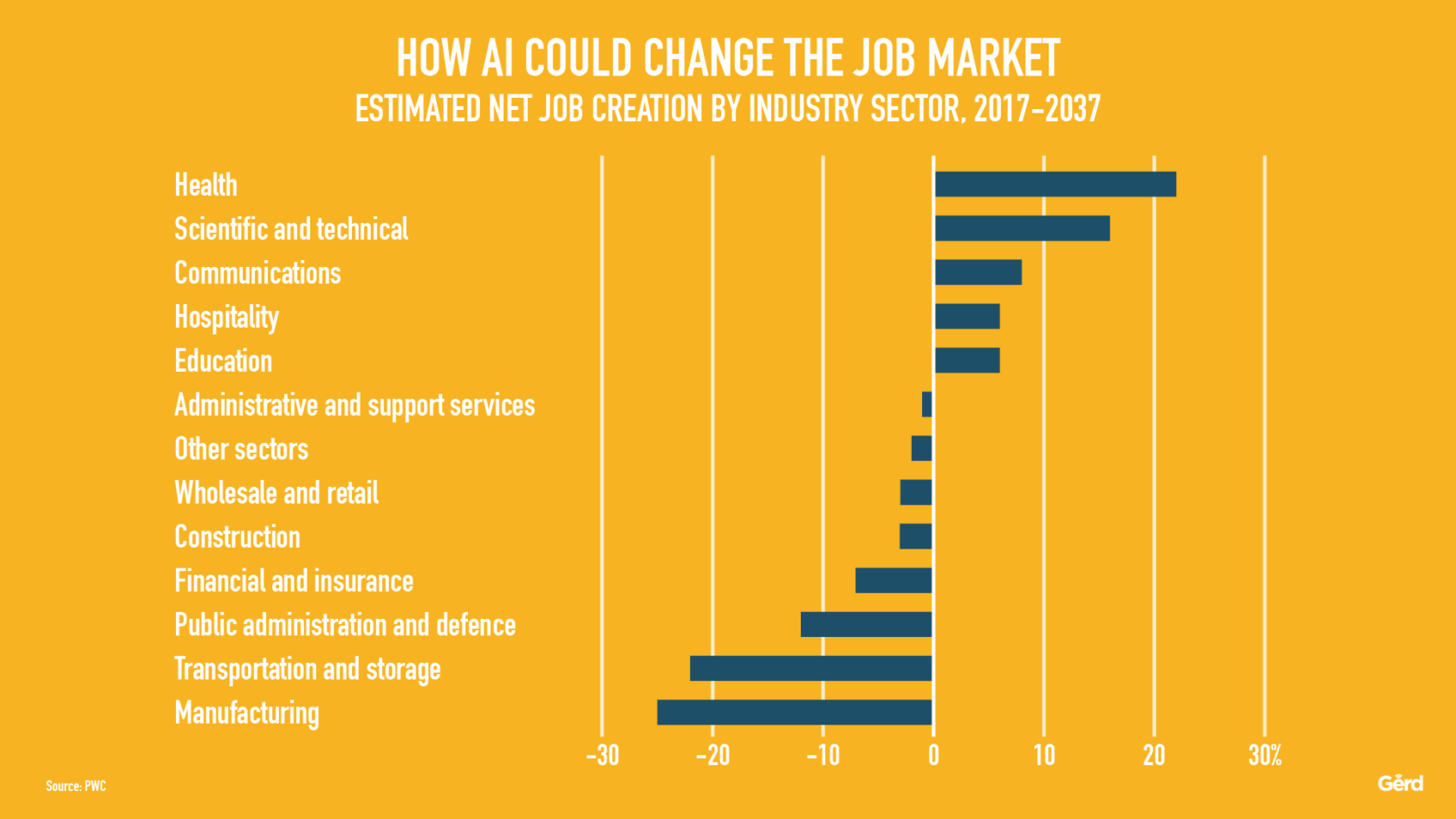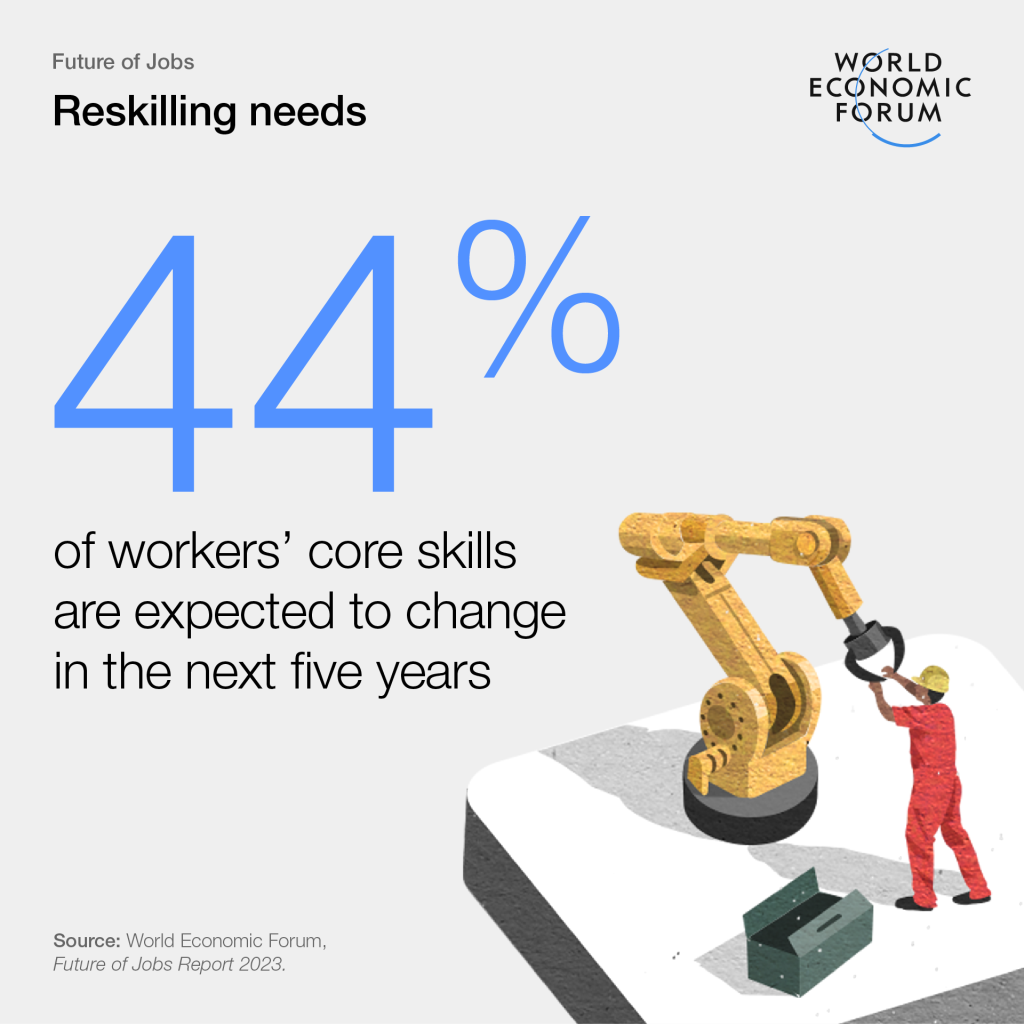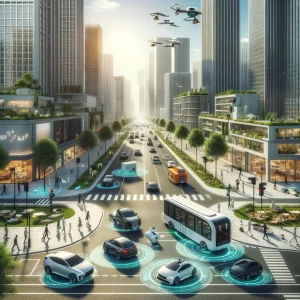
“Are we ready for the invasion of AI in our workplace?” – Over the past few years, Artificial Intelligence (AI) has become a vital element in our daily work routines. It’s not just about automating tasks; AI plays a crucial role in making decisions smarter. This transition has completely altered how we work, bringing both exciting new opportunities and challenges that require careful consideration and thoughtful adaptation. According to “The Social Shepherd” statistical blog from 2024, 35% of companies had already invested in AI, while 42% planned to do so in the future years.
In this article, we explore how AI affects our society, looking at job changes and economic inequality. We think Artificial Intelligence has an amazing potential to revolutionize things. However, as AI evolves, numerous worries concerning job difficulties emerge. It is essential to address these concerns and ensure the ethical and responsible usage of AI for the greater good of our society.
Job Creation and Advancements in Technology

One thing to note is that AI is actually making more jobs instead of taking them away. The World Economic Forum predicted that AI may generate 97 million new jobs by 2025. AI systems must be developed, deployed, and maintained by experienced specialists ranging from AI engineers and data scientists to ethical experts and policy analysts. Additionally, AI can drive economic growth by raising productivity, encouraging innovation, and allowing firms to provide new services and products. For instance, Chatbots, powered by AI, are widely used in customer service. Companies like Amazon and Apple utilize AI-driven chatbots to handle routine customer queries, providing quick and efficient responses and freeing up human agents for more complex issues. This not only enhances customer service but also creates jobs for AI trainers, developers, and customer support specialists. An additional instance involves AI-powered diagnostic tools, such as PathAI, assisting pathologists in analyzing medical images and detecting diseases. This not just improves diagnostic accuracy but also creates new job opportunities for medical AI specialists, contributing to economic growth in the healthcare sector.
Jobs at Risk?
While some industries may see minimal disruption or even employment growth, others may see major job displacement. As automation and machine learning technologies continue to influence the nature of work, there is a growing concern about potential job losses for individuals in certain industries. Did you know that 30% of workers globally are concerned that AI may replace their occupations over the next three years? Or that in India, 74% of the workforce has similar concerns? Automation and AI are changing jobs in various industries by efficiently handling routine tasks, like data entry and manufacturing. This can lead to job displacement as businesses are motivated to save money through decreased labor expenses. Industries such as manufacturing, transportation, and healthcare are automating tasks traditionally done by people. Additionally, AI is taking on roles in decision-making and creativity, challenging traditional job boundaries.
The effects on Socioeconomic Equality
The evolution of AI, with its influence on job displacement and automation, not only changes the employment environment, but it also raises serious concerns about the larger implications for socioeconomic equality. One key variable contributing to this, is the growing skills gap. This gap not only exacerbates existing inequalities but also creates an obvious distinction between individuals with specialized AI abilities, like data scientists, who benefit from high-demand job opportunities and substantial salaries, and those without these distinctive talents. This trend is most evident when considering the distribution of wealth in the United States. The top 10% of the richest people in the US control roughly 70% of total wealth, while the lowest 50% own only 2%, demonstrating the severe economic disparities.
Moreover, the allocation of wealth among successful IT businesses contributes to the widening economic disparities, as individual corporations make huge financial advantages, resulting in an uneven distribution of money and leaving the rest of society to deal with the negative effects. As AI becomes more integrated into our daily lives, we must face these concerns head-on by adopting regulations that ensure inclusive education and promote a well-balanced workforce development.
…Transition to a Balanced AI-Powered Labor Market
For those who believe that AI will eventually reduce the total demand for human work and urge for a stable socioeconomic structure that separates employment and income, a fundamental question arises: “How can we successfully negotiate the shift to a balanced AI-powered labor market?”. We must aid individuals in properly adapting to this new economic landscape, ensuring that companies bridge the skill gap, and enabling the labor market to function at its optimal capacity. To achieve this, an integrated approach is required to address the explosion of AI across two critical sectors:
1. Reskilling and Upskilling
The World Economic Forum predicts that by 2027, 44% of workers’ core skills would be disrupted as technological advancements, outpacing companies’ ability to design and scale up training programs. It is critical to invest in education and training programs that emphasize skills relevant to the AI generation. This investment is essential for preventing individuals from falling behind in the face of ongoing technological breakthroughs. AI professionals and policymakers play a critical role in establishing a culture of continuous learning. Reskilling programs should be tailored to the evolving labor market, enabling individuals to acquire new skills and adapt to the requirements of an AI-driven economy. Upskilling projects, on the other hand, concentrate on improving the knowledge of individuals who already have appropriate skills, assuring their long-term competitiveness in their field of expertise. As Nils J. Nilsson wrote on his research study, people cannot become “Polynesians” without training. However, it is essential to recognize that not all the individuals in a blue-collar or middle-management positions can pursue a career in Computer Science or Programming if their current position is removed. Therefore, training programs for “human service occupations” like as education, family counseling, and healthcare become essential, given their resilience to automation.
2. Proactive Safeguards
A further important aspect of a successful transition is the adoption of proactive safeguards. As AI continues to influence labor markets, policymakers have a responsibility to safeguard individuals who may struggle to adapt to new careers. This includes offering protective measures such as unemployment compensation, job replacement services, and financial aid to those affected.
Conclusion
In conclusion, the diverse impact of AI on employment emphasizes the necessity for specific measures. The transformative potential of AI is evident, capable of both creating and replacing jobs simultaneously. As AI technology evolves rapidly, the necessity becomes clear: creating a balanced, AI-powered labor market requires a collective commitment to the education, training, and well-being of all members of the workforce. The solution does not lay in limiting technological development, but in guiding it toward a future in which the majority benefits from AI. Moving forward requires adaptability, justice, and an unalterable commitment to creating a labor market that represents the best of human creativity and technology innovation. What it comes does not have to be defined by unrestricted inequality. If we act prudently, AI can lift more boats than it sinks.



